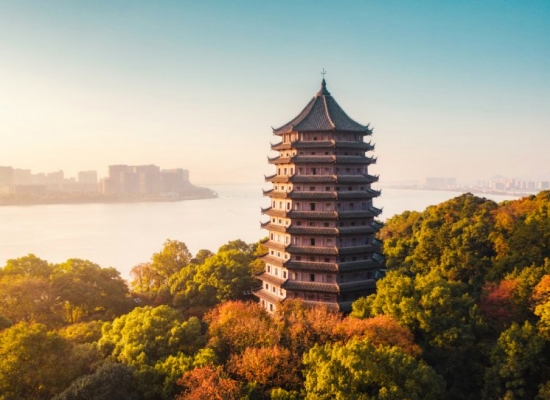Liuhe Pagoda, also known as the Six-Harmonies Pagoda, is a well-known ancient pagoda in China. It is located in Hangzhou, Zhejiang. The pagoda is a multi-storied pagoda with a beautiful and majestic appearance. Standing tall, it is a traditional Chinese wooden-structure pagoda. The pagoda has a unique architectural style, with upturned eaves on each floor, showing the exquisite craftsmanship of ancient architecture.

Best Time to Visit: All Seasons; September is the month for the Qiantang River Tide.
Recommended Visiting Time: 1-2 hours
Opening Hours: 6:30-17:30
Tickets: Entrance Fee: CNY 20/person (Excluding the Pagoda Climbing Fee);
Pagoda Climbing Fee: CNY 10/person
Address: No. 16, Zhijiang Road, Xihu District, Hangzhou, Zhejiang, China.
Architectural Features

Its structure is very solid. The internal wooden structure is complex and orderly, demonstrating advanced construction techniques in ancient times. Each floor of the pagoda has different compartments and corridors, allowing visitors to have a panoramic view of the surrounding scenery through the openings.
The exterior of the pagoda is richly decorated. There are various carvings such as Buddhist patterns, flower patterns, and geometric patterns. These decorations not only add an artistic touch to the pagoda but also reflect the religious and cultural connotations of that era.
Cultural Significance

Liuhe Pagoda has a long history and is an important witness to the development of ancient architecture and culture. It has withstood the test of time and natural disasters and still stands today, showing the excellent building skills of the ancients.
As a Buddhist pagoda, it is a place for religious activities and pilgrimages. It represents people's pious beliefs and the spread of Buddhist culture in the region. In addition, the pagoda also has a certain symbolic meaning in traditional Chinese culture, symbolizing peace, stability, and the pursuit of harmony.
It is also a famous scenic spot. Standing on the pagoda, visitors can enjoy the beautiful scenery of the Qiantang River and the surrounding mountains and waters. It attracts a large number of tourists from home and abroad every year, playing an important role in promoting local tourism and cultural exchanges.































